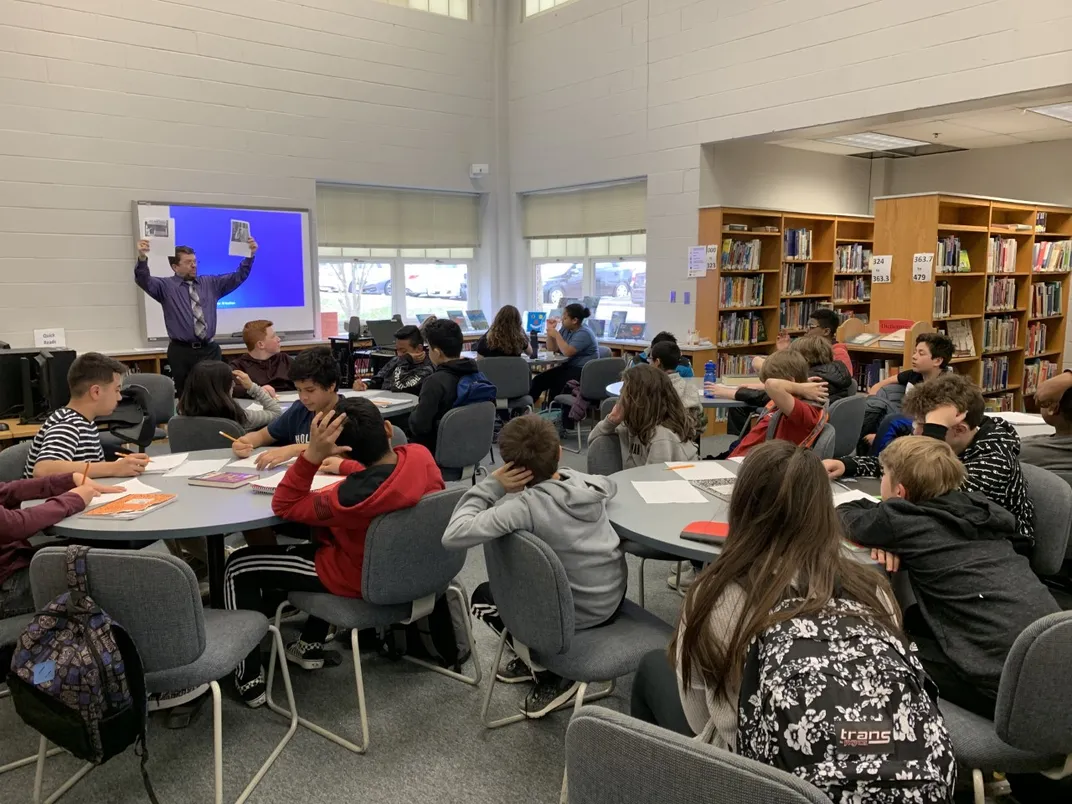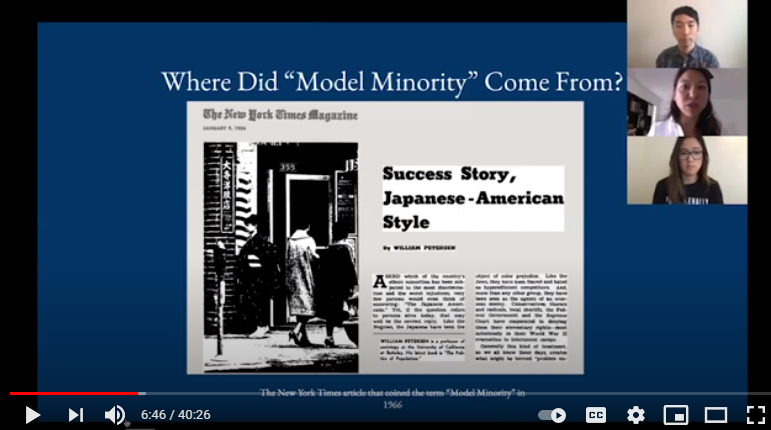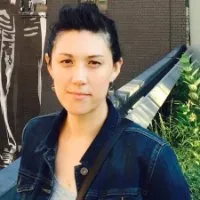What’s Missing from Classrooms When Asian American and Pacific Islander Voices Aren’t Included?
Asian Americans and Pacific Islanders (AAPIs) have been present throughout America’s past through migration, labor, activism, science innovation, art, literature, community organizing, and so much more. When AAPI stories and voices are missing from what students learn, grappling with our current moment of increased hate and violence, and thoughtfully discussing this with students runs the risk of becoming even more difficult without support and resources to contextualize what we are witnessing today.
:focal(764x457:765x458)/https://tf-cmsv2-smithsonianmag-media.s3.amazonaws.com/blogging/featured/JA_collections.jpg)
During the summer of 2018, the Smithsonian Asian Pacific American Center (APAC) had the privilege of collaborating with four educators and the National Veterans Network on the co-creation of new elementary and middle school activities focusing on the incarceration of 120,000 Japanese Americans during World War II. We gathered in Washington, D.C. to test new ideas for classroom-ready activities that would immerse educators and their students in stories about Japanese American individuals who were incarcerated, volunteered to serve in the military, or resisted Executive Order 9066.
We asked ourselves:
How can we thoughtfully partner with educators and collaborate on encouraging our youngest learners to find meaningful connections with Asian American and Pacific Islander stories?
While we tested the usability of new activities and lesson plans, we visited the Smithsonian National Museum of American History’s exhibition, Righting a Wrong: Japanese Americans and World War II to see the exhibition’s objects, archival materials, and other interactive materials firsthand. During this visit, one of the educators in our small cohort, a 2nd grade teacher for D.C. Public Schools, pulled me aside to talk about how he was grappling with “the hook” for elementary lessons about this history. What stories would resonate with a 2nd grade student? He shared that in looking at the objects and thinking about how so many young children were displaced during this time, losing friendships and a sense of home, one story that personally struck him was that families were not allowed to bring pets to camp. As a dog owner, this was a devastating thought for him, and indeed, for young people thinking about what would happen if something you loved and cared for was no longer a part of your life.
The activities co-created as an outcome of this educator’s emotional and empathetic connection ask students to question and think about the idea of fairness, an appropriate strategy for younger elementary students. Other ideas linking historical empathy with developmentally appropriate questions turned into two activity books for elementary school and middle school teachers and students, asking them to think about what life was like in camp and what they would have done if faced with Executive Order 9066.

The experience of co-creating activities with educators and community partners served as another reminder that learning about Asian Americans and Pacific Islanders (AAPIs) is essential for all grade levels and vital for learning opportunities throughout the year to be more reflective of the U.S. population. In addition to the history of Japanese American incarceration, there are countless more AAPI stories to tell, such as Filipino Americans shaping American labor movements, Pacific Islander artists and activists raising awareness on the impacts of climate change in their communities, and more. There is more work to be done to better understand the needs of educators so that we can come together to ensure AAPI inclusion in curricula across the country.
At APAC, our constant aim is to uplift and amplify the stories of AAPIs across the country. Since 2018, we have continued to listen and learn from K-12 educators and professors about the challenges in learning about, absorbing, and teaching AAPI stories. Pervasive stereotypes that AAPI individuals and communities face, such as the perpetual foreigner and model minority myths, are just some of the barriers that have limited meaningful inclusion in educational materials. AAPIs have been present throughout America’s past through migration, labor, activism, science innovation, art, literature, community organizing, and so much more. When AAPI stories and voices are missing from what students learn, grappling with our current moment of increased hate and violence, and thoughtfully discussing this with students runs the risk of becoming even more difficult without support and resources to contextualize what we are witnessing today.

Recognizing the need for content support that explores topics in history and today, APAC is pleased to share a series of resources co-created with educators and AAPI community members:
We Are Not A Stereotype: Breaking Down APA Bias is an educational video series created by educators for educators. From videos about Asian-Black solidarity movements for liberation to caste apartheid in South Asian American communities, viewers meet content experts who not only share their knowledge and research, but also their lived experiences as AAPI community members.
Learning Together connects K-12 educators to AAPI voices and stories through interviews, links to community-created educational resources, tips on how to discuss anti-Asian hate with students, book recommendations, discussion prompts, and more.
Making Art + Global Interconnections introduces educators to four new art-making ideas for the virtual, in-person or hybrid classroom. These activities were co-created by AAPI artists and educators and will introduce users to activities that connect us with stories in the Marshall Islands, Bangladesh, Syria, Lebanon, and Hawaiʻi.
There is much more work to be done. APAC continues to engage with even more K-12 educators and AAPI community members to co-create more accessible and easily available resources and supports that will help bring AAPI stories into every classroom across the country.
